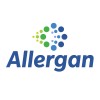
Safety and Efficacy of AGN 210669 Ophthalmic Solution in Patients With Ocular Hypertension or Primary...
Ocular HypertensionGlaucomaThe study will evaluate the safety and efficacy of AGN-210669 ophthalmic solution in comparison with AGN-210669 vehicle and bimatoprost ophthalmic solution dosed once-daily each morning, in subjects with ocular hypertension or primary open-angle glaucoma. Subjects will be followed for 2 weeks.

Comparing Effects of Two Fixed Combinations Ophthalmic Solutions on Ocular Blood Flow
GlaucomaA 10 week evaluation, crossover design study including a 3 week washout period between treatments, to determine the effects of Combigan® (fixed combination brimonidine tartrate 0.2%/timolol maleate 0.5%) and Cosopt® (fixed combination dorzolamide hydrochloride-timolol maleate ophthalmic solutions) on ocular blood flow as measured by retrobulbar blood flow.

Nasal Steroids in Controlled Glaucoma
Intraocular PressurePatients that have consented to participate in the study will be randomly assigned to one of two groups: control group or nasal steroid group. Patients in the control group will receive normal saline inhaler. Patients in the study group will receive steroid inhaler Follow-up visits are: baseline and weeks 2, 4, 6 after starting the spray. Intraocular pressure will be recorded on all visits.

Effect of Xalacom® (Latanoprost/Timolol) and Combigan® (Brimonidine/Timolol) Fixed Combination on...
RetinaOcular PhysiologyGlaucoma is one of the most common causes of blindness in the industrialized nations. For a long time glaucoma has been defined as a disease in which high intraocular pressure (IOP) leads to irreversible optic disc damage and subsequent visual field loss. However, recent investigations show that IOP is not the only factor that is involved in the glaucomatous process leading to retinal ganglion cell death. The role of vascular factors in the pathogenesis of glaucoma has recently received much attention based on animal experiments and epidemiological studies. The main focus of glaucoma is still directed towards a decrease in IOP. There is, however, also considerable interest whether antiglaucoma drugs influence ocular perfusion. Although measurement of ocular blood flow is still difficult, a number of innovative techniques have been realized which cover different aspects of ocular perfusion. In the present study Xalacom® (latanoprost/timolol) and the fixed combination of Combigan® (brimonidine/timolol) will be compared with respect to their IOP lowering efficacy as well as their ocular hemodynamic effects.

Effects of Travatan Z and Xalatan on Ocular Surface Health
GlaucomaOcular HypertensionThe purpose of this randomized, double-masked, parallel-group, multicenter study is to evaluate ocular surface effects after the administration of travoprost with SofZia® preservative system or Xalatan once daily for 12 weeks.

Comparison of Istalol™ 0.5% QD (Timolol Maleate/Sorbitol Complex, ISTA Pharmaceutical) to Brimonidine...
Ocular HypertensionOpen-Angle GlaucomaTo assess the additional benefit of common adjunctive classes on the diurnal IOP curve in patients assessed as needing additional treatment to reach target intraocular pressure (IOP). To demonstrate superiority of IOP control with Istalol 0.5% QD compared to Brimonidine Tartrate 0.2% BID as adjunctive therapy in adults with uncontrolled IOP's (determined by P.I. based on target pressures) currently treated with Latanoprost 0.05% in the study eye(s).

Anecortave Acetate Safety in Patients With Open-Angle Glaucoma or Ocular Hypertension
Open-angle GlaucomaOular HypertensionThe purpose of this study was to evaluate the safety and intraocular-lowering efficacy of anecortave acetate depot when administered by anterior juxtascleral depot (AJD) for the treatment of elevated intraocular pressure (IOP) in patients with open-angle glaucoma or ocular hypertension.

Safety and Intraocular Pressure (IOP)-Lowering Efficacy of AL-39256 in Patients With Open-Angle...
Open-Angle GlaucomaOcular HypertensionThe purpose of this study is to evaluate the safety and intraocular pressure (IOP)-lowering efficacy of AL-39256 in patients with open-angle glaucoma or ocular hypertension.

24-hr IOP With Travoprost/Timolol Compared With Latanoprost/Timolol in XFG
GlaucomaA crossover, randomized, single-masked study which compares the short-term (3 months) 24-hour IOP control and safety of travoprost/timolol fixed combination given once in the evening, versus that of latanoprost/timolol fixed combination given once in the evening in patients with exfoliative glaucoma. The primary objective of this trial is to compare the quality of 24-hour IOP control after 3 months of chronic therapy with these two medications.

Dose, Effects and Characteristics of Pilocarpine
Open-angle GlaucomaThe purpose of this investigation, in which pilocarpine was given in repeated doses, was to evaluate: Part I - the effects of different concentrations of pilocarpine hydrochloride on intraocular pressure. Part II -the effects on intraocular pressure of glaucomatous patients to pilocarpine 2% when given once, twice and four daily. In addition, we studied various attributes of the eye which may serve as indicators of responsiveness of individual patients to pilocarpine.
